Kia Ceed vs VW Tiguan – Differences & prices compared
Two cars, one duel: Kia Ceed meets VW Tiguan.
Which one wins in performance, efficiency and value for money? Find out now!
Costs and Efficiency:
When it comes to price and running costs, the biggest differences usually appear. This is often where you see which car fits your budget better in the long run.
Kia Ceed has a evident advantage in terms of price – it starts at 23500 £, while the VW Tiguan costs 32800 £. That’s a price difference of around 9308 £.
Fuel consumption also shows a difference: VW Tiguan manages with 0.40 L and is therefore decisively more efficient than the Kia Ceed with 6 L. The difference is about 5.60 L per 100 km.
Engine and Performance:
Under the bonnet, it becomes clear which model is tuned for sportiness and which one takes the lead when you hit the accelerator.
When it comes to engine power, the VW Tiguan has a decisively edge – offering 272 HP compared to 140 HP. That’s roughly 132 HP more horsepower.
In acceleration from 0 to 100 km/h, the VW Tiguan is clearly quicker – completing the sprint in 5.90 s, while the Kia Ceed takes 9.50 s. That’s about 3.60 s faster.
In terms of top speed, the VW Tiguan performs slightly better – reaching 242 km/h, while the Kia Ceed tops out at 197 km/h. The difference is around 45 km/h.
There’s also a difference in torque: VW Tiguan pulls evident stronger with 400 Nm compared to 253 Nm. That’s about 147 Nm difference.
Space and Everyday Use:
Beyond pure performance, interior space and usability matter most in daily life. This is where you see which car is more practical and versatile.
Both vehicles offer seating for 5 people.
In curb weight, Kia Ceed is distinct lighter – 1298 kg compared to 1599 kg. The difference is around 301 kg.
In terms of boot space, the VW Tiguan offers evident more room – 652 L compared to 395 L. That’s a difference of about 257 L.
In maximum load capacity, the VW Tiguan performs evident better – up to 1650 L, which is about 359 L more than the Kia Ceed.
When it comes to payload, VW Tiguan hardly perceptible takes the win – 533 kg compared to 490 kg. That’s a difference of about 43 kg.
Who comes out on top?
Overall, the VW Tiguan shows itself to be wins the duel decisively and secures the title of DriveDuel Champion.
It convinces with the more balanced overall package and proves to be the more versatile choice for everyday use.

VW Tiguan
Kia Ceed
The Kia Ceed stands out in the compact car segment with its sleek design and impressive handling. It offers a comfortable and well-equipped interior that appeals to both drivers and passengers. With its efficient engine options, the Ceed provides a smooth and enjoyable driving experience suitable for city commutes and longer journeys alike.
details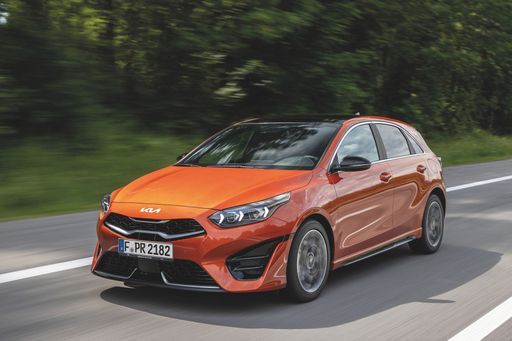 @ press.kia.com
@ press.kia.com
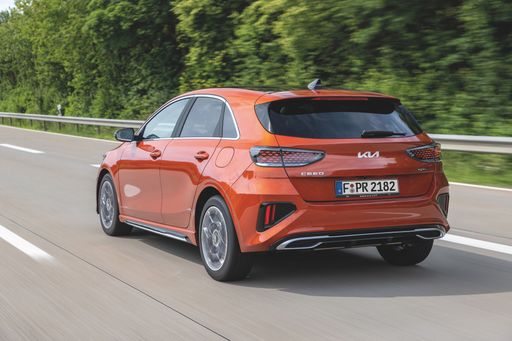 @ press.kia.com
@ press.kia.com
 @ press.kia.com
@ press.kia.com
VW Tiguan
The VW Tiguan presents itself as a versatile and practical option in the SUV market, combining a stylish design with a spacious and comfortable interior. It offers a smooth driving experience, making it well-suited for both urban environments and longer journeys. With its focus on safety and innovative technology features, the Tiguan remains a compelling choice for families and adventurers alike.
details @ Volkswagen
@ Volkswagen
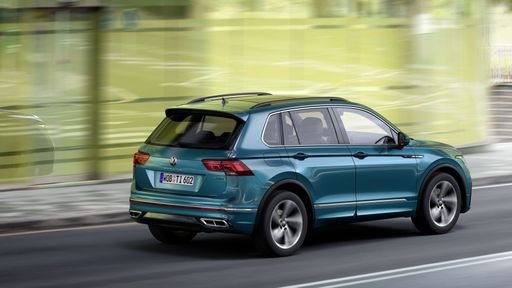 @ Volkswagen
@ Volkswagen
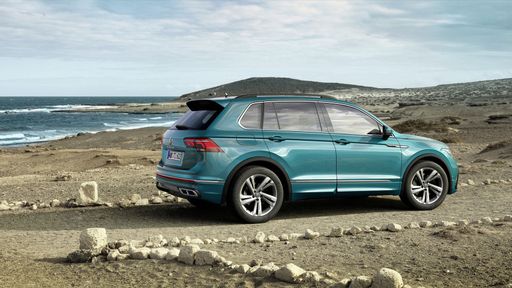 @ Volkswagen
@ Volkswagen
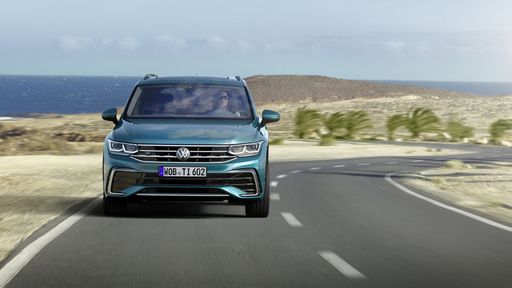 @ Volkswagen
@ Volkswagen
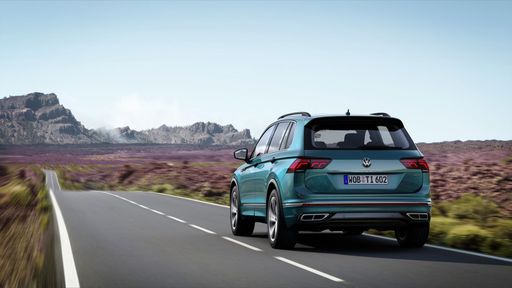 @ Volkswagen
@ Volkswagen
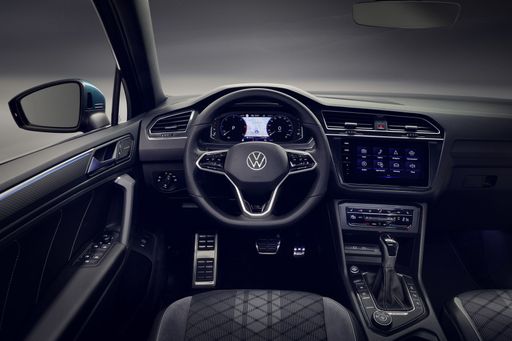 @ Volkswagen
@ Volkswagen

|

|
|
|
|
Costs and Consumption |
|
|---|---|
|
Price
23500 - 26300 £
|
Price
32800 - 51900 £
|
|
Consumption L/100km
6 - 6.4 L
|
Consumption L/100km
0.4 - 8.4 L
|
|
Consumption kWh/100km
-
|
Consumption kWh/100km
-
|
|
Electric Range
-
|
Electric Range
119 - 129 km
|
|
Battery Capacity
-
|
Battery Capacity
19.70 kWh
|
|
co2
137 - 146 g/km
|
co2
8 - 190 g/km
|
|
Fuel tank capacity
50 L
|
Fuel tank capacity
45 - 58 L
|
Dimensions and Body |
|
|---|---|
|
Body Type
Hatchback
|
Body Type
SUV
|
|
Seats
5
|
Seats
5
|
|
Doors
5
|
Doors
5
|
|
Curb weight
1298 - 1372 kg
|
Curb weight
1599 - 1890 kg
|
|
Trunk capacity
357 - 395 L
|
Trunk capacity
490 - 652 L
|
|
Length
4315 mm
|
Length
4539 mm
|
|
Width
1800 mm
|
Width
1842 - 1859 mm
|
|
Height
1447 mm
|
Height
1656 - 1658 mm
|
|
Max trunk capacity
1253 - 1291 L
|
Max trunk capacity
1486 - 1650 L
|
|
Payload
478 - 490 kg
|
Payload
460 - 533 kg
|
Engine and Performance |
|
|---|---|
|
Engine Type
Petrol, Petrol MHEV
|
Engine Type
Plugin Hybrid, Petrol, Petrol MHEV, Diesel
|
|
Transmission
Manuel, Automatic
|
Transmission
Automatic
|
|
Transmission Detail
Manual Gearbox, Dual-Clutch Automatic
|
Transmission Detail
Dual-Clutch Automatic
|
|
Drive Type
Front-Wheel Drive
|
Drive Type
Front-Wheel Drive, All-Wheel Drive
|
|
Power HP
100 - 140 HP
|
Power HP
130 - 272 HP
|
|
Acceleration 0-100km/h
9.5 - 13.2 s
|
Acceleration 0-100km/h
5.9 - 10.6 s
|
|
Max Speed
178 - 197 km/h
|
Max Speed
198 - 242 km/h
|
|
Torque
172 - 253 Nm
|
Torque
220 - 400 Nm
|
|
Number of Cylinders
3 - 4
|
Number of Cylinders
4
|
|
Power kW
74 - 103 kW
|
Power kW
96 - 200 kW
|
|
Engine capacity
998 - 1482 cm3
|
Engine capacity
1498 - 1984 cm3
|
General |
|
|---|---|
|
Model Year
2024
|
Model Year
2024 - 2025
|
|
CO2 Efficiency Class
E
|
CO2 Efficiency Class
B, G, D, E, F
|
|
Brand
Kia
|
Brand
VW
|
What drivetrain options does the Kia Ceed have?
The Kia Ceed is available as Front-Wheel Drive.
The prices and data displayed are estimates based on German list prices and may vary by country. This information is not legally binding.
